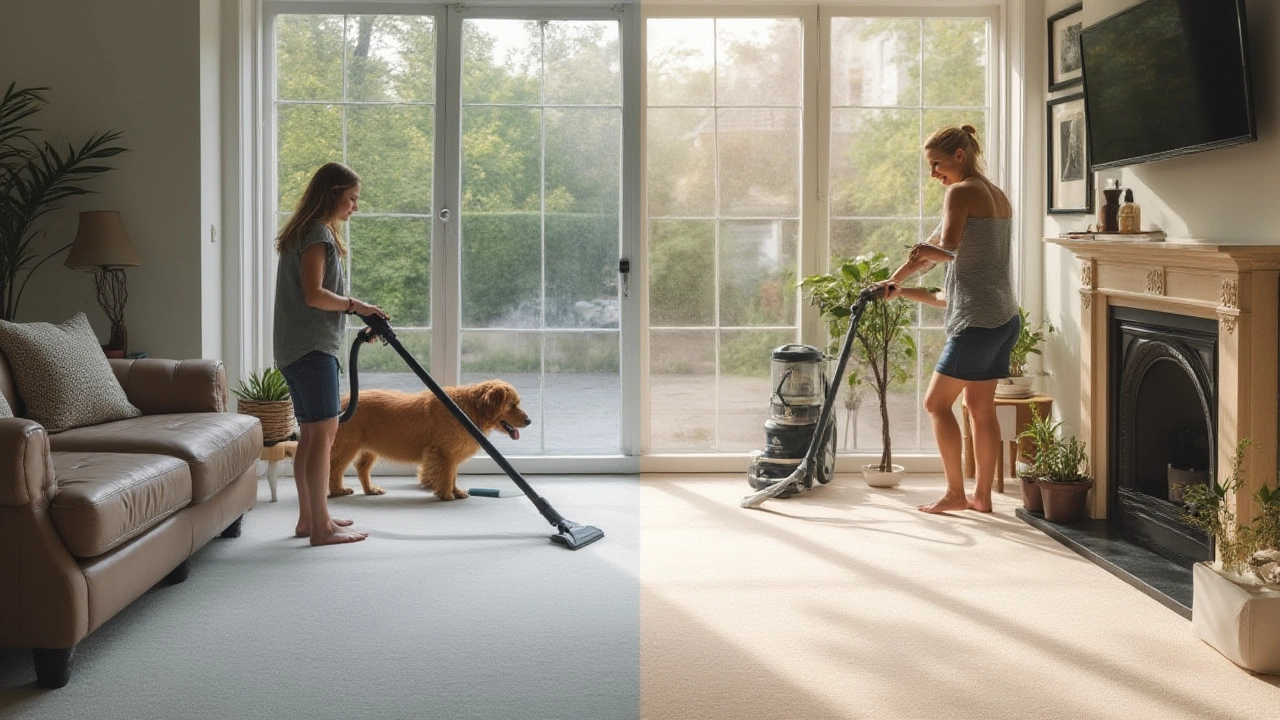Deep Carpet Cleaning: What It Is and Why It Matters
Every carpet hides dust, allergens, and stubborn stains that regular vacuuming just can't lift. Deep carpet cleaning goes beyond surface sweeps – it uses hot water extraction, steam, or specialized chemicals to pull grime out of the fibers. The result is a carpet that looks brighter, smells fresher, and lasts longer. It also improves indoor air quality, which is a big win for anyone with allergies or asthma.
When to Call a Pro
If you notice lingering odors, pet stains that won't fade, or a grayish film on high‑traffic areas, it's time to bring in a professional. Pros have truck‑mounted machines that deliver hot water at the right pressure and extract it quickly, so the carpet dries faster. They also know which eco‑friendly cleaners work best on different fiber types, so you avoid damage. A professional visit every 12‑18 months can keep your carpet in peak condition and save you from costly replacements down the line.
Do‑It‑Yourself Deep Clean Tips
Got a small area or a tight budget? You can still achieve a decent deep clean at home. First, vacuum thoroughly to remove loose dirt. Then, mix a mild dish‑soap solution with warm water (about a teaspoon of soap per litre). Use a clean microfiber mop or a rented portable extractor to apply the solution, working in 1‑meter squares. After scrubbing, rinse with plain water and blot with a dry towel. Open windows or use fans to speed up drying – a damp carpet can grow mold in as little as 24 hours.
For stubborn stains like wine or coffee, treat the spot immediately with a mix of white vinegar and water (1:2 ratio). Dab, don't rub, to avoid spreading the stain. Let it sit for five minutes, then blot again. Repeat until the stain lifts. Remember, the key to a successful DIY deep clean is not to over‑saturate the carpet; too much liquid makes drying a nightmare.
Choosing the right cleaning product matters. Many commercial cleaners contain harsh chemicals that can fade colors or irritate skin. Look for biodegradable, low‑VOC options that are safe for kids and pets. Brands that list “eco‑friendly” or “non‑toxic” on the label usually meet these standards.
Finally, maintain your carpet between deep cleans. Spot‑clean spills right away, use entryway mats to trap dirt, and vacuum at least once a week. A regular routine reduces the frequency of deep cleaning sessions and keeps the fibers from compacting.
Whether you decide on a professional service or a DIY approach, deep carpet cleaning is a simple investment that pays off in a healthier, more attractive home. Take action today – your carpet (and your nose) will thank you.

Shampoo vs Steam Cleaning: What’s Best for Carpet Cleaning?
Wondering if you should shampoo or steam clean your carpets? Discover the Pros, the Cons, tips, facts, and what actually works best for your home.
Read More